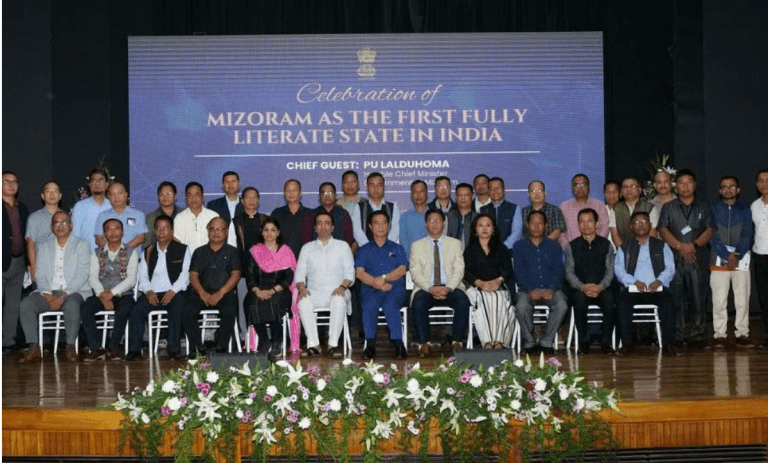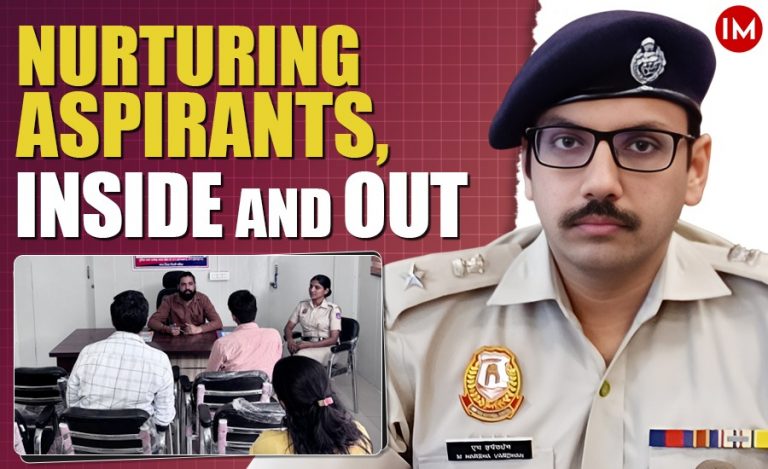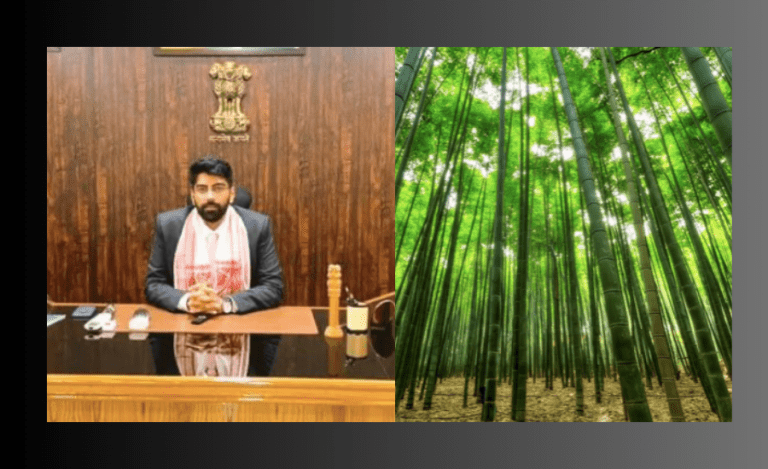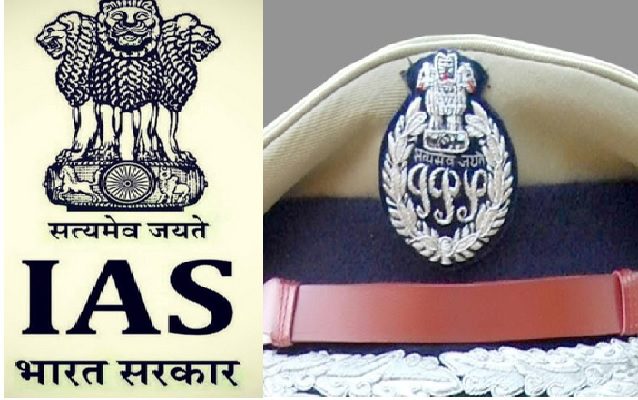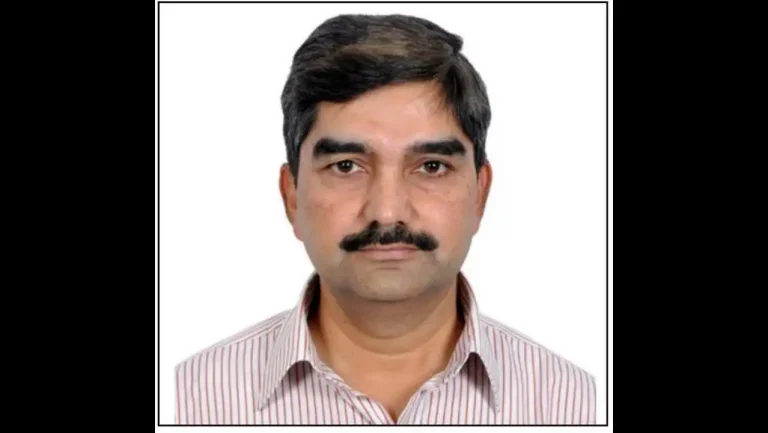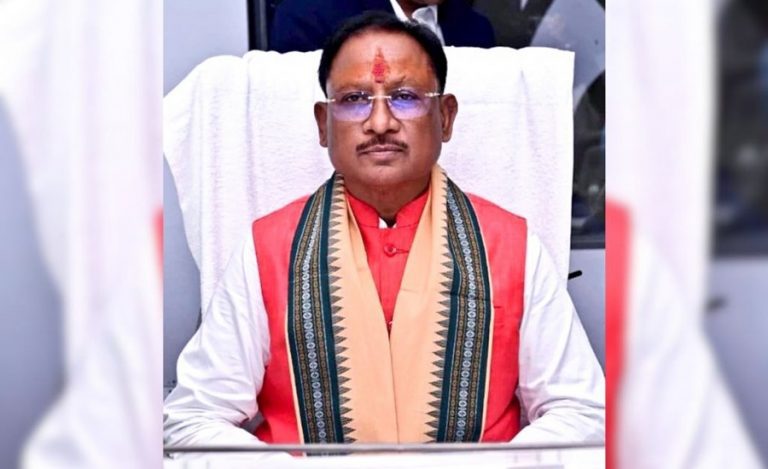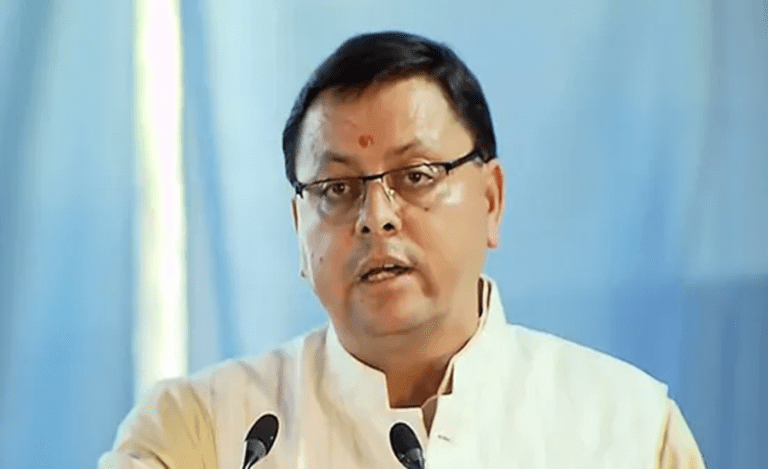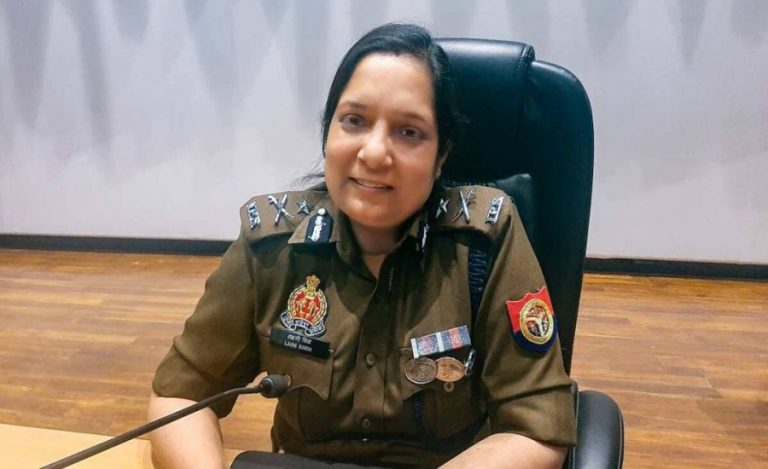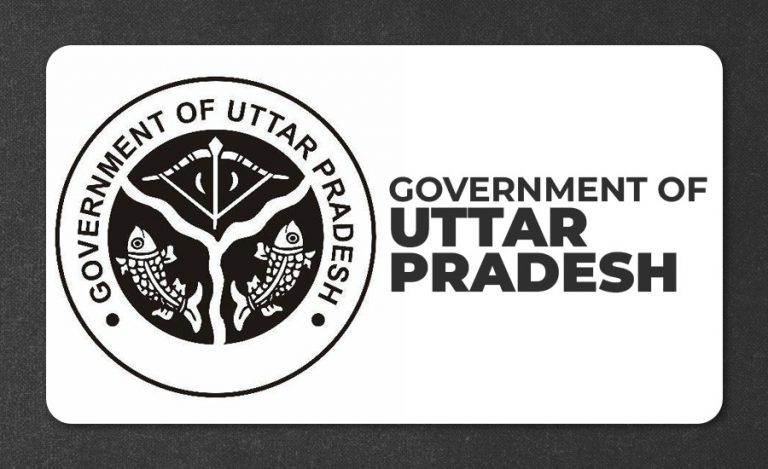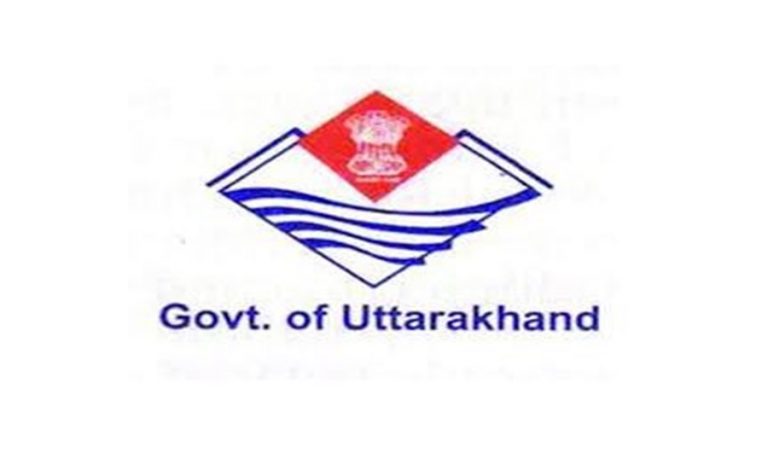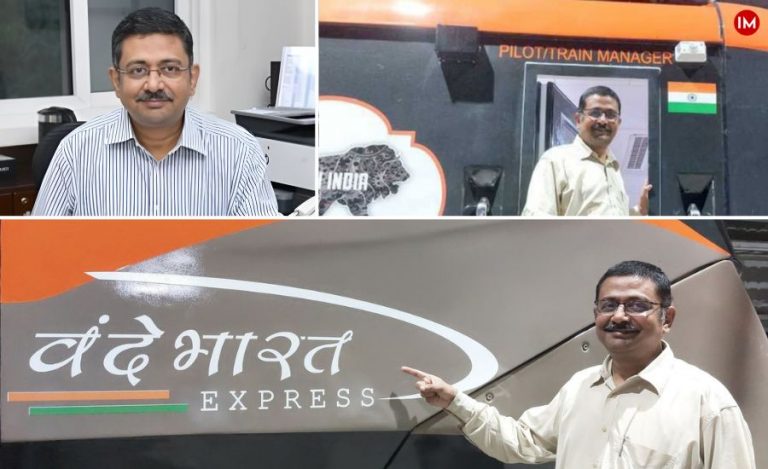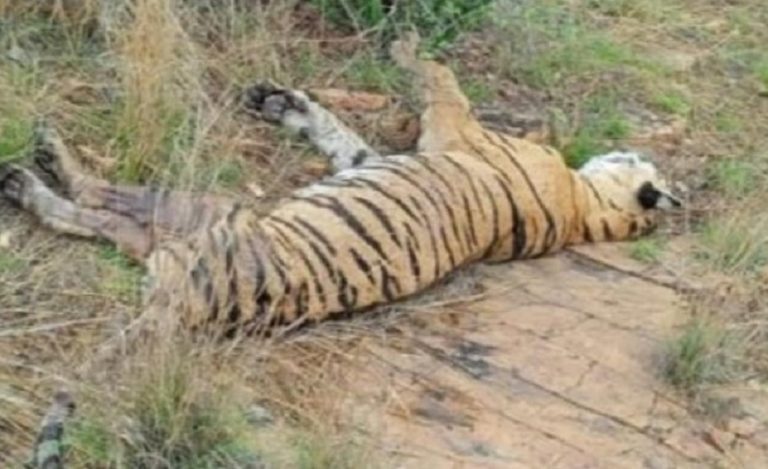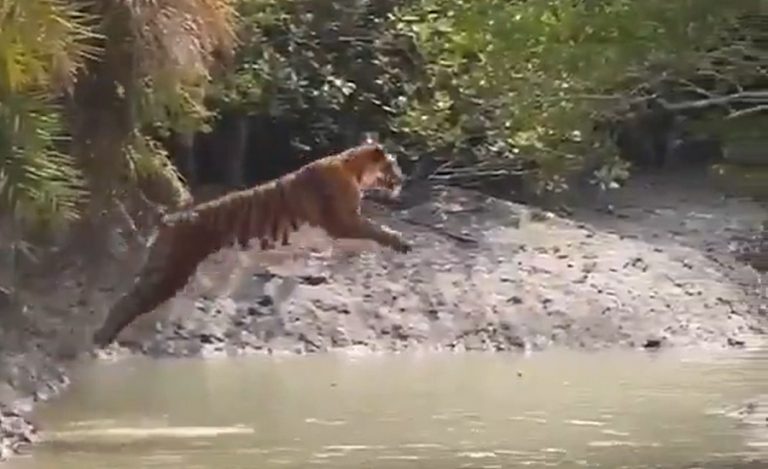Growing two crops together is a common farming method. But, not combining crop, duck and fish farming – all three together. However, this is now becoming a common practice in the Changlang district of Arunachal Pradesh. Under the leadership of DC Changlang, 2018 batch IAS officer Sunny K Singh, the administration introduced ‘Paddy cum Fish cum Duck culture’ in many villages in the Vijaynagar circle. This pilot project is gaining huge popularity and is being implemented in a successful way.
Although farmers in Ziro Valley were already doing ‘wet rice cultivation’ with ‘fish farming’, the Changlang administration added duck farming to it, making Changlang the first district to introduce duck farming in the paddy cum fish culture. Ten farmers are doing this ‘three in one’ farming and the administration is lending every possible help to them, from training to providing seedling, and exposure visit to Ziro Valley for learning more skills.
Indian Masterminds interacted with the AGMUT cadre officer and District Collector of Changlang, Mr. Sunny K. Singh, to know about this initiative in detail.

PADDY, FISH & DUCK FARMING
In the valley regions of Arunachal Pradesh, agricultural fields are often interconnected for water linkages. Farmers do the wet rice cultivation, which is the most prevalent method of farming in the Northeast.
The 3-in-1 project was started in June this year, whereby, along with planting of paddy crops, fish and duck farming were also started. The harvesting will take place towards November last. Ten farmers are doing this in each hectare of their farm which has a total area of 10 hectares.
Mr. Singh, however, said that integrating duck was their only addition to the prevalent practice. Fish cum paddy culture was being practiced in the Lower Subansiri district of Ziro Valley since a long time. “We are replicating the same with our own innovative methods,” the officer said.
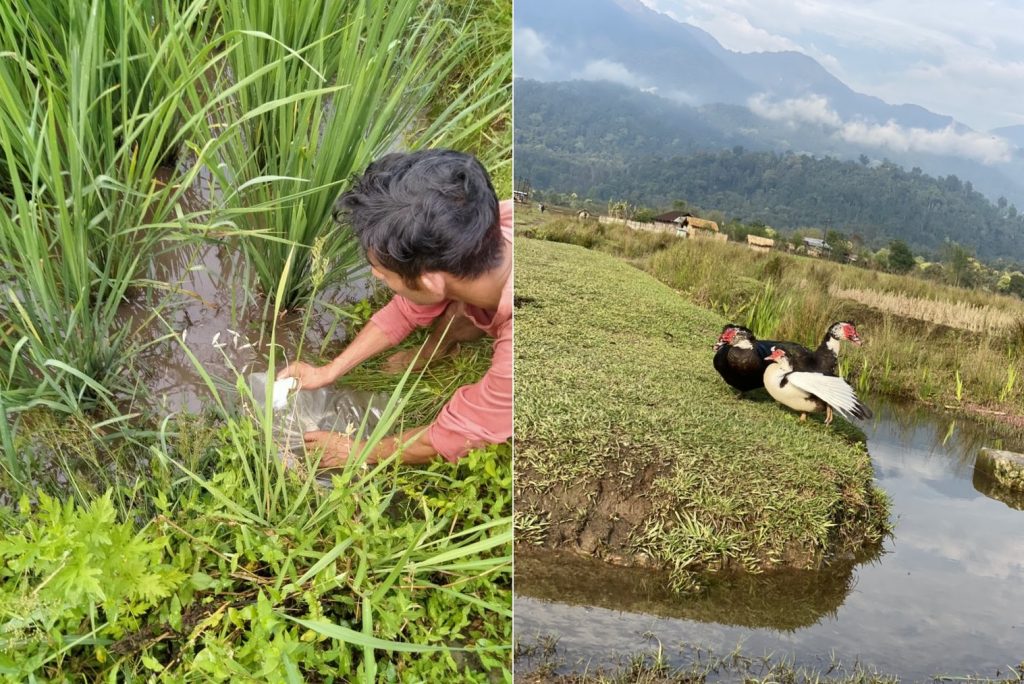
INNOVATION
The hilly topography of the area is such that one field is located above the other. Due to gravity, water keeps moving down from one field to the other through channels. Farmers were doing both paddy and fish farming in these fields.
Changlang administration also introduced duck farming to it. Now, ducks live in the flowing channels, moving from one field to another. The ducks are added when the fish grow in size so that the ducks cannot eat them.
While adding the fish, the farmers slightly increase the size of the ridges too, so that they cannot jump out. And to stop the birds from preying on them, small tunnels are also made, so that the fish can go inside those tunnels to save themselves. This is how the entire system works.
Mr. Singh said, “The special thing is that the fish feed on the paddy crop roots. Usually, there are many insects in the roots which sometimes cause harm to the crop, and by eating the insects, the fish benefit the crop, too.”

WATER CHANNELS
The water resources department (WRD) taps the streams from the mountains and makes channels to transport the water to the fields. To tackle the excess water, the channels are interconnected, so that the water keeps flowing non-stop till it is diverted through the outlets in the field and taken into the river.
FACILITIES
The state government has appointed a young fishery officer to help the farmers, and the pilot project was implemented under his supervision. An exposure trip will also be conducted for the farmers to ensure proper farming and harvesting.
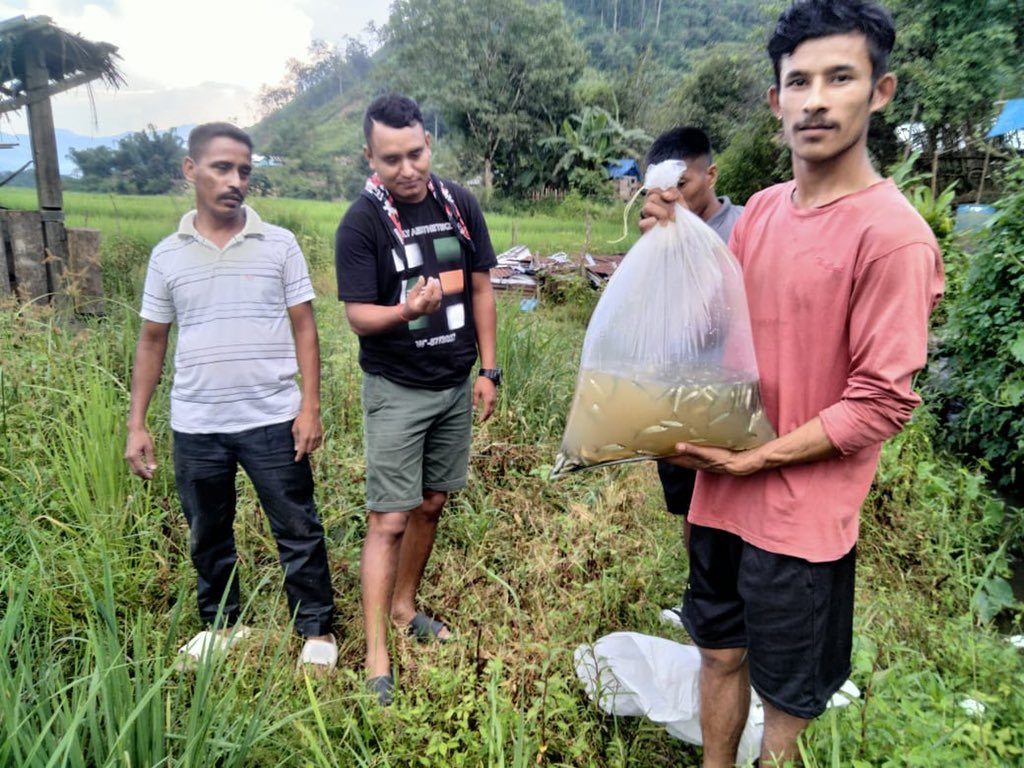
HARVESTING
The project has been designed in such a way that the paddy crop and the fish will be ready for harvesting around the same time. Hence, harvesting of both crops and fish will take place simultaneously. Mr. Singh said, “After harvesting the paddy, we will stop the channels through which water come and let the fields dry out so that the fish can also be harvested easily.”
BENEFITS
This method is generating additional income for the farmers, while reducing the cost of paddy crop. It is also helping in water conservation.
Another benefit which Mr. Singh pointed out is that the fish and ducks are an easy source of protein for the common man.
The initiative is being implemented in many villages in the Vijaynagar circle, which is a remote area and often gets disconnected from the district due to landslides during the rainy season. At such times, this project will be very beneficial for the people as they will continue getting protein from the duckeries and fisheries in the paddy crop fields.
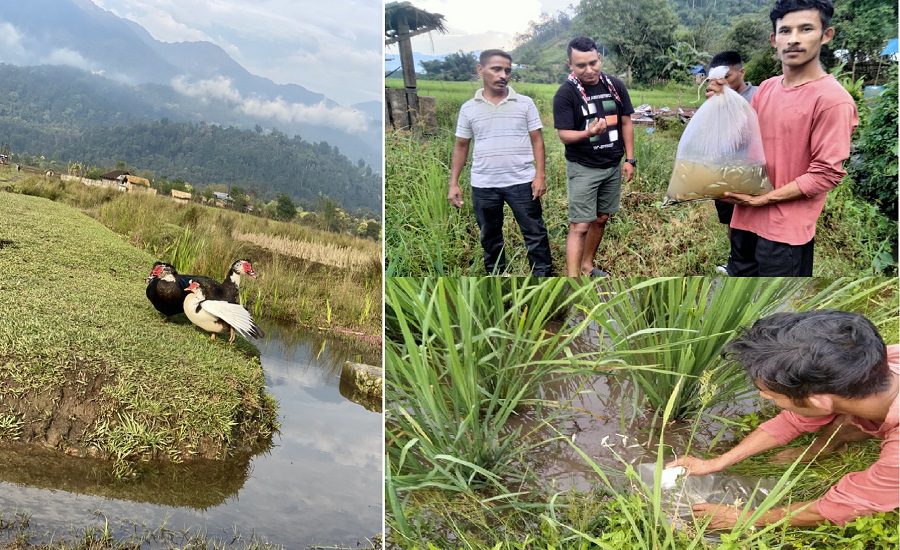
“This is a hilly area where there are no regular ponds. Farming takes place in whatever plain area that is available. Therefore, there are no special means for fish or duck farming. Hence, this 3-in-1 farming model will help fulfill the protein requirement of the local people,” the officer said in conclusion.


